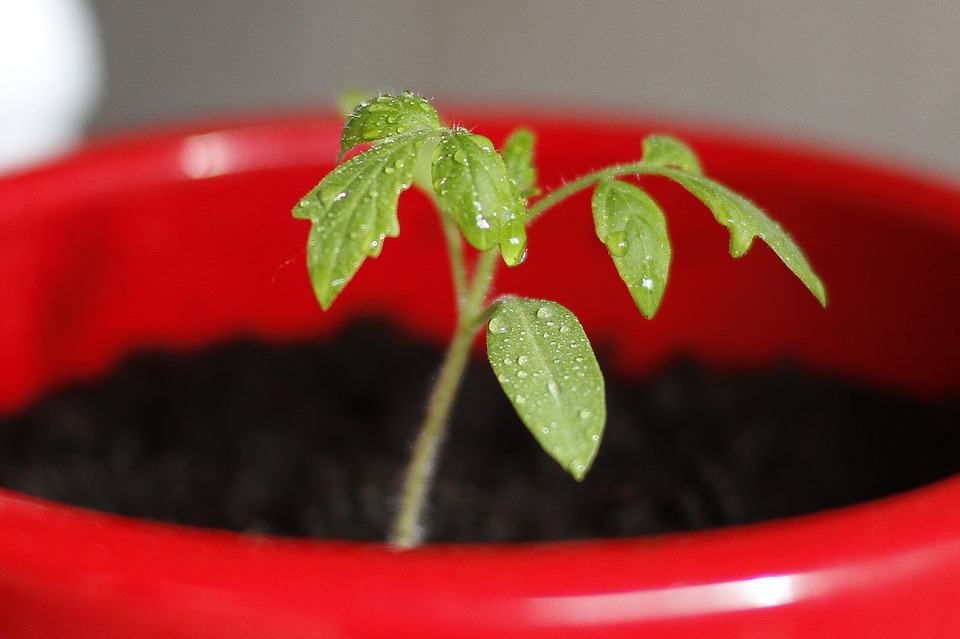If your tomato plants look tall but have long gaps between each leaf node, you’ve got leggy tomato plants. Leggy tomatoes are always caused by a lack of adequate light. If you’ve started tomato seedlings on a windowsill with indirect light, you’ve probably experienced this already before.
Legginess is more common among plant starts from the nursery and and seedlings you’ve grown at home, but it can happen to mature tomato plants, too. The good news is there are some ways to deal with leggy tomato plants even after transplanting, although it’s not as easy as dealing with leggy tomato seedlings.
On this page:
Cutting Back Determinate vs. Indeterminate Tomato Plants
First of all, before you decide to cut back your tomato plants, you should know what kind of tomato you’re growing. There are two main categories of tomatoes: determinate and indeterminate, and it should be noted on the seed packet or plant label.
Determinate tomato plants grow to a predetermined height and will produce mostly all their tomatoes at once. Because any kind of pruning will directly impact your yield, I don’t recommend cutting back determinate tomato plants at all.
Indeterminate tomato plants, on the other hand, will keep growing, easily getting over 6 feet tall, and produce multiple flushes of tomatoes until disease or a frost kills them.
Indeterminate tomato plants can regrow if the stem is broken, but it’s still not recommended to just cut back your indeterminate tomato plants. Instead, it’s better to let some of your side shoots (called suckers) grow out, and then those suckers can grow into new branches with their own clusters of tomatoes and even their own suckers. Afterward, you can cut back the main growing stem.
How Do I Prevent Leggy Tomato Plants?
Giving your seedlings enough strong light will ensure your tomato plants stay relatively compact before they are transplanted. You can use T5 fluorescents, CFL grow lights, or LED grow lights. Keep the lights at least few inches above the top to avoid burning your tomato plants.
When you transplant, make sure your tomato plants are getting as much full sun as possible. If they are planted in partial or full shade, it could lead to leggy tomato plants, among other issues like lower yields and slower ripening.
What to Do If You Have Leggy Tomatoes
How you approach the problem depends if you’re dealing with leggy tomato seedlings that haven’t been transplanted or larger plants that have been transplanted already.
Leggy Tomato Seedlings
 Tomato seedlings that have become leggy before transplanting is a common problem but one that is not serious at all. Tomato plants have the ability to readily grow roots all along the stem. If you have leggy tomato seedlings, don’t worry – plant your tomatoes deeper, burying part of stem.
Tomato seedlings that have become leggy before transplanting is a common problem but one that is not serious at all. Tomato plants have the ability to readily grow roots all along the stem. If you have leggy tomato seedlings, don’t worry – plant your tomatoes deeper, burying part of stem.
Even if your tomato seedlings aren’t leggy, I still recommend planting your tomatoes deep. There is a host of other benefits such as making your tomatoes more resilient to drought, allowing your tomato plants to take up more nutrients more efficiently, and also giving your tomato plants a stronger physical anchor point to grow.
Leggy Mature Tomato Plants
If your indeterminate tomato plants are already in the ground and getting leggy, there isn’t much you can do to remedy it, but you can promote more side growth. I don’t recommend completely cutting back your leggy tomato plants.
Tomato plants are naturally vining, and at each point where the leaf connects to the main stem, there is the potential for a side shoot to grow out – called a sucker.
Each tomato sucker will grow into a whole new branch, with its own leaves, tomatoes, and suckers of its own. It’s normally recommend to prune off these suckers as they can very quickly get out of control. Tomato plants are incredibly vigorous and will naturally turn into a bushy mess if left unpruned. However, you can take advantage of this behavior if you have a tall, leggy tomato plant.
Instead of pruning off the suckers, leave the ones within a few feet off the ground. They look like tiny leaf growths, but after a few weeks will become long branches.
At this point, you could prune the top of plant if you wish. As the branches grow, you can tie them to a stake or support it however you want. The result is a bushier tomato plant.
The main reason I don’t advise simply cutting back the whole plant at first is that it will take longer for the tomato to recover and grow its suckers. Instead, let the tomato plant send its energy to the side growth, then cut back as necessary.
